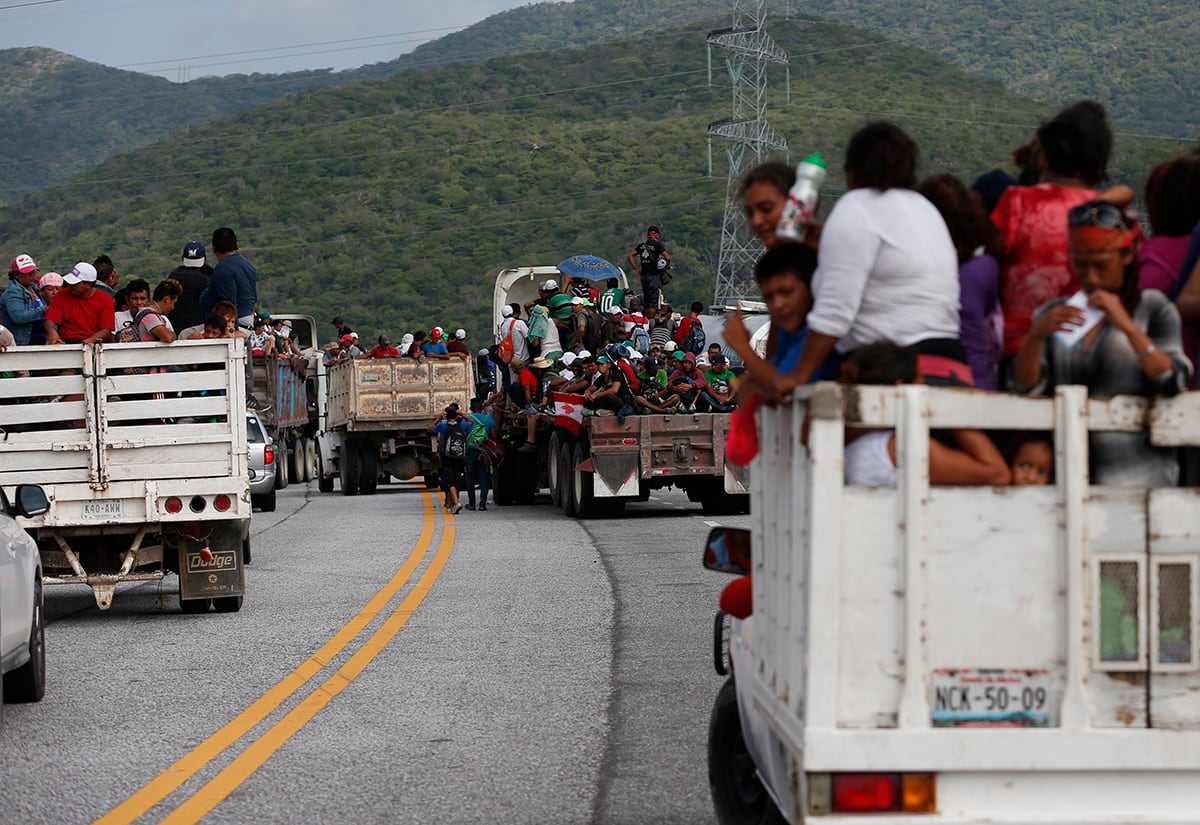The Pentagon faced questions Monday as to why it selected thousands of active-duty forces to deploy to the border instead of sending additional National Guard.
In responses to reporters, Pentagon spokesman Army Col. Rob Manning said when the Department of Homeland Security made the request for military support, it specifically sought forces to assist with planning; engineering support to construct barriers; aviation support to transport Customs and Border Patrol personnel; medical teams; command and control capabilities and the ability to construct temporary housing for Customs and Border Patrol personnel.
Those are active-duty capabilities; but they are also the purview of the National Guard. Approximately 4,800 troops have been deployed with 5,200 expected to be in place by the end of the day.
Of those 4,800, 2,600 are in Texas and 1,100 each are in Arizona and California. Between 750 to 1,000 of those forces are Marines from Camp Pendleton. Several Pendleton units are being combined to form an engineering Marine Air Ground Task Force that will stay in California, a DoD official said on the condition of anonymity.
RELATED

Manning initially said the administration specified the use of active-duty forces, but the press office quickly clarified that DHS had only requested the capabilities, and DoD made the decision to use Title 10 forces over the Guard.
“We determined that the units that were selected to fulfill this mission were the right units with the right capabilities that we could rapidly deploy in position in order to assist DHS,” Manning said.
If National Guard forces had been selected, state governors would have had to approve their deployment. Earlier this year when Trump requested military support at the border, Defense Secretary Jim Mattis authorized that up to 4,000 personnel could fulfill the request. Governors sent only about 2,100 forces total, and several governors refused.

The Pentagon still could not provide any data on the costs of the deployment but said that DoD’s comptroller was working on those figures.
Manning also emphasized that U.S. forces will not be patrolling the border, will not be interacting with migrants crossing the border, and the only forces who are armed will be military police or other security forces — who are there to provide force protection for their fellow soldiers, not protect CBP as they patrol. Military police or security forces will also secure entry points of DoD facilities along the border.
“There is no plan for DOD personnel to interact with migrants or protesters,” Manning said. “We are absolutely in support of [Customs and Border Patrol].”
Despite the stand-off role, troops are deploying with body armor.
“They are in the uniform that the commander determined was appropriate for that mission,” Manning said.
Tara Copp is a Pentagon correspondent for the Associated Press. She was previously Pentagon bureau chief for Sightline Media Group.





